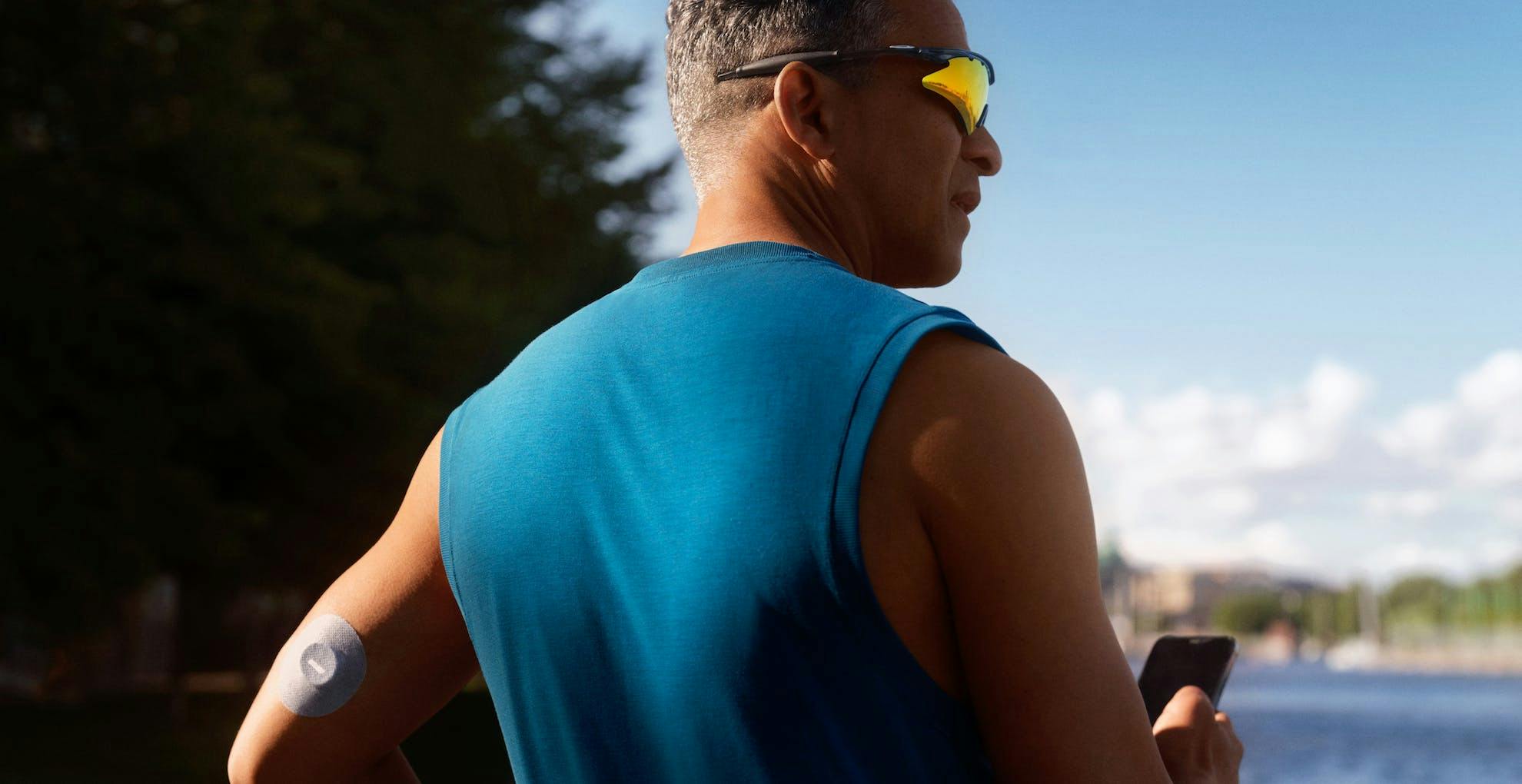Intermittent fasting (IF) combined with fasted exercise offers benefits such as improved fat metabolism, increased insulin sensitivity, and lowered gut inflammation. But training on an empty stomach may also reduce muscle mass and make your workout less enjoyable. So how can you exercise safely during fasting?
How your body uses energy while fasting and exercising
Your body’s preferred energy source is glucose (the simplest building block or sugar that makes up all carbs). When the glucose circulating in your bloodstream runs low, your body will tap into its backup reserve of glucose, which is stored in the form of glycogen.
About 80% of the body’s glycogen stores are located in the muscles, and the rest in the liver [1, 2]. An important distinction is that muscle glycogen, unlike liver glycogen, cannot be released into the bloodstream as glucose, as muscle cells lack the necessary enzymes.
In between meals and during a fasted state (overnight or longer), your body will use the available liver glycogen to maintain the blood glucose within the normal range while muscle glycogen remains stable [1]. When most of the liver glycogen is used up, your body will break down fat tissue, which leads to increased circulating fatty acids. These will be utilized as energy by muscle cells. Muscles will always primarily use fat as the main source of energy between meals and during low-intensity physical activities such as walking, except during times when blood glucose is high. In this case it would shift to also use glucose as energy [1].
So why do you have such a large amount of glycogen in the muscles, and when is it used?
During exercise intensities above ~65% of maximal oxygen uptake (VO2max, our best measurement of cardiovascular health and level of fitness) or about 75-80% of maximum heart rate in endurance activities or when lifting heavy weights, muscles shift to utilize carbohydrates as their main energy source. This is called carbohydrate-prone metabolism. It takes roughly 60 to 90 minutes of intense exercise to deplete muscle glycogen. Note that muscle fatigue may occur before complete depletion [2].
What should you be mindful of when exercising and intermittent fasting?
Be mindful of the level of intensity
A systematic review of 28 studies found mixed effects on VO2max and endurance after fasted exercise regimens [3]. Time-restricted eating increased VO2max (though this wasn’t the case during a Ramadan fast, possibly due to fasting-related dehydration). Exercise intensity needs to be high to increase endurance. That said, many studies have observed decreased performance and a lack of beneficial effects from exercising in a fasted state at higher intensities.
Be mindful of exercise timing
Poorly timed exercise in combination with energy restriction and/or improper replenishment of glycogen stores after exercise can cause the breakdown of muscle protein for energy (catabolism).
In one study of lean individuals, researchers found that more muscle mass was lost when fasting was combined with energy restriction compared to fasting alone or regular energy restriction [7]. In a review of fasted exercise, several studies noted lowered muscle mass, while others showed no difference [3, 4, 6].
Loss of muscle mass reduces the body’s utilization of glucose. Low muscle mass is also the leading cause of frailty as we age. It’s also important to note that most IF and exercise studies are over-represented by male athletes, creating challenges in the generalization of results to other population groups. Emerging evidence suggests that there may be sex differences in response to IF and exercise in the fasted state. The female hormonal cycle is sensitive to reduced energy availability, which negatively impacts the menstrual cycle [8].
5 tips to safely exercise while intermittent fasting
- Moderate Intensity: Maintain low to moderate intensity levels to prevent low glucose events and improve metabolic flexibility [4, 5, 9]. Gradually increase your intensity and duration up to 60 minutes. Shorter sessions of resistance training are recommended, e.g., 3 sets per muscle group in a 3-split program [6].
- Exercise Timing: Plan your more intensive or longer exercise sessions during times when you can replenish your glycogen storage and consume an adequate amount of calories for energy balance before your next fasting period starts [10]. Adjust your fasting protocol if needed.
- Carbohydrate and Protein Refuel: Carbohydrates are essential in glycogen replenishment; protein promotes muscle synthesis and repair. When consumed with carbohydrates, protein stimulates glycogen replenishment [10]. Portion size depends on body size; if you eat adequate energy for your activity level without carbohydrate restriction, glycogen stores replenish within 24 hours. If time is essential (e.g. multiple sessions), the optimal is 0.8g carbohydrate and 0.2-0.4g protein per kg bodyweight per hour for four hours [10, 11].
- Hydration: Fasting increases the risk of dehydration, and exercising with mild dehydration increases the risks of poor recovery and elevated stress hormones. Drink isotonic sports drinks to maintain hydration and electrolyte levels during fasted exercise [10].
- Intuitive: Be mindful of your body, recovery, and progress. If you’re a woman, track your menstrual cycle.
Key takeaways
- Keep exercise at a moderate intensity for best results and minimal risks.
- Time your intense or longer exercise sessions before planned meals and within your eating window.
- Replenish your muscle glycogen and avoid incomplete recovery by eating a carbohydrate-rich meal together with protein after fasted exercise.
- Keep hydrated before the exercise and replenish lost liquid to avoid dehydration.
Lisa holds two master’s degrees in physiology: Nutrition and Exercise Physiology. She practices what she preaches, with exercise and food being always at the forefront of decisions. Her favorite place is in the nature of the Nordics. She is often diving deep into the mechanisms of how we humans actually work — and thinking a lot about how we can put this knowledge into practice. She has published academic papers on research in gestational diabetes and nutrition, and teaches group exercise classes in her free time.
References:
- https://www.ncbi.nlm.nih.gov/pmc/articles/PMC3248697/
- https://nutritionandmetabolism.biomedcentral.com/articles/10.1186/s12986-015-0055-9
- https://pubmed.ncbi.nlm.nih.gov/32408718/
- https://www.ncbi.nlm.nih.gov/pmc/articles/PMC6983467/
- https://www.sciencedirect.com/science/article/pii/S027153172400006X
- https://pubmed.ncbi.nlm.nih.gov/27737674/
- https://pubmed.ncbi.nlm.nih.gov/34135111/
- https://www.sciencedirect.com/science/article/pii/S2451965019300420
- https://pubmed.ncbi.nlm.nih.gov/36170970/
- https://blog.nasm.org/nutrition-for-recovery
- https://jissn.biomedcentral.com/articles/10.1186/s12970-017-0189-4


